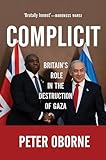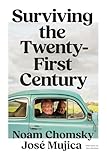Since resuming residence in the White House a few months ago, it has not been difficult to detect in President Trump’s behaviour traces of his background as a real estate deal maker. Indeed, it could be said that his statements and actions since becoming president demonstrate a clear predisposition to perceive geopolitics predominantly as an arena of opportunity for ‘property development’. ‘Property’ defined in a broad sense to include any high value natural resource, land, or other asset that can be turned into profit.
We argue that the acquisition of such assets by fair means or foul (mainly the latter) and/or the control of access (for example, waterways) to them are important features of the president’s megalomaniacal self-image as the world’s new colossus and that they have a determining influence on his view of geopolitics and hence on US foreign policy.
In some well-known cases, such as Palestine, President Trump has already expressed his interest explicitly in these terms.
Conveniently, and perhaps not coincidentally, the president’s predilections in these respects dovetail beautifully with the insatiable appetites of late-stage capitalism, which depends for its survival on the acquisition and consumption of ever-increasing quantities of ‘property’. You might say that it is a union made in oligarchic heaven.
Below, as plausible parody, we outline a Property Development Theory of Geopolitics (PDTG) as follows: first, we set out the criteria employed to identify target countries for property acquisition; and second, on the basis of those criteria, we draw up a property development country hit list, which reflects our best estimates of countries at risk of invasion or attack.
This list can be used to assess the predictive validity of our theory as measured by the vigour with which countries on the list are attacked militarily and in other ways by the US and/or its allies and proxies.
Country Assessment Criteria and Hit List
Countries that might be regarded as prime targets are identified in terms of the following criteria:
First, the richness of their natural resources (a sine qua non). Does the country have enough ‘property development’ potential to warrant and maintain the president’s attention?
Second, the ease with which the country can be demonised as a mortal threat to the ‘democratic way of life’ or as a terrorist haven, a source of refugees and/or drugs (etc.) and can therefore be made a ‘legitimate’ target for invasion or some other form of attack such as economic sanctions, targeted assassinations, and so on. This would enable the US to employ the tried and tested method of attacking the country concerned in order to save both its own people as well as the rest of the world, as was the case in Afghanistan and Iraq.
Third, the military strength of the country and whether proxy states or other agents such as mercenaries can be used to do the dirty work for the US.
Fourth, the degree to which the US government is subject to determining influences such as those exerted by Israel in relation to Palestine and Iran and/or strong pressure from major corporations and/or the target country has significant regional strategic significance.
We have excluded Russia and China from our list because they are military superpowers that would not be susceptible to conventional US imperial smash and grab methods involving direct military attack.
Neither have we included Ukraine. While undoubtedly asset rich, Ukraine’s notional status as a US ally and as the US/Nato proxy in the war with Russia largely exempts it from imperial smash and grab. It is conceivable also that the US will do an asset sharing deal with Russia and compel Ukraine and Nato to accept it.
The absence from our list of erstwhile US target favourites like North Korea and Cuba is explained by the paucity of their assets and their relatively high military strength and the absence of suitable proxies. Their political misbehaviour in the eyes of the US is punished by extensive economic sanctions.
We have included Palestine because we believe that the US will allow Israel to complete its occupation and ethnic cleansing of Gaza, the destruction of its infrastructure, and the expulsion of its inhabitants. Its asset richness stems from the high value and significance to Israel (and therefore the US) of the land it occupies and its reserves of natural gas.
As we have suggested elsewhere, Iran’s heretofore underestimated military strength makes it a high-risk target for the US and Israel, but this is heavily outweighed by its maximum scores on the other criteria, making further military attacks against it a certainty in the short term.
The first three countries in the high susceptibility category are all high value in terms of assets or ‘property’ and relatively low risk military targets.
In particular, the DRC and the CAR have long been subjected to various forms of foreign state-supported corporate predation (using mercenaries etc.), are weak militarily, and the governance circumstances of the two countries have been reduced to ‘failed state’ status.
By some calculations, the DRC is the world’s richest country in terms of natural resources.
Regarding Venezuela, whose oil reserves are the largest in the world, President Trump’s ambitions were made clear in late August 2025 when he despatched three US warships armed with cruise missiles to the Venezuelan coast. Venezuela’s high demonisation score is accounted for by its socialist government.
Panama and Greenland are less attractive for the reasons given in Table 1, but this does not preclude them from attack. Greenland’s inclusion as a semi-autonomous region within the Kingdom of Denmark and Denmark’s authority over its foreign and defence policies explain its score on military strength.
Conclusion
The serious purpose of this plausible parody is to identify in rank order a hit list of countries that according to our PDTG will become the next victims of US imperialism under President Trump or, where they are already subject to attack, US or US-supported aggression against them will be intensified.
The other purpose is to demonstrate the depths to which international relations has sunk under the current US administration, which, given their normal abysmal state, required a deep dive.
The implications for those countries that we deem to be either ‘certainties’ or ‘high risk’ are particularly sinister. Clearly, their interest in the predictive validity of our theory will be neither light-hearted nor academic.











